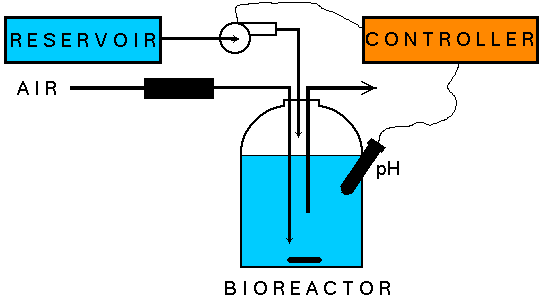
A device that uses the rate of feeding to control a state variable in continuous culture is termed an auxostat. The organisms establish their own dilution rate. While the well-known chemostat is stable and simple for investigating continuous cultivation at low to moderate dilution rates, an auxostat tends to be much more stable at high dilution rates. Population selection pressures in an auxostat lead to cultures that grow rapidly. Practical applications include high-rate propagation, destruction of wastes with control at a concentration for maximum rate, open culturing because potential contaminating organisms cannot adapt before washing out, and operation of processes that benefit from careful balance of the ratios of nutrient concentrations.
This name was coined by Martin and Hempfling although
earlier investigators had proposed the terms nutristat, nustat,
and controlled-concentration-coupled-continuous-cultivation (C5).

Two examples of auxostat:
![]()
Last modify: 05/01/2000, by Xuezhen Kang